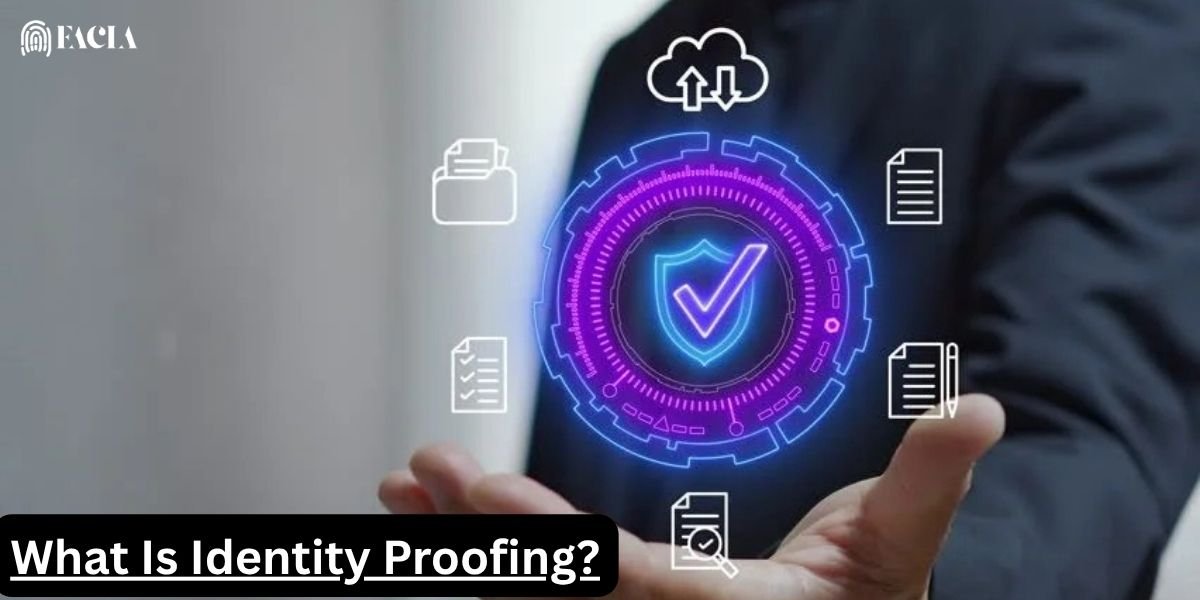Financial institutions must verify customer identity. But why is so much personal information required during account opening and ongoing transactions?
Navigating financial regulations is complex. Businesses face the challenge of complying with regulations like the Customer Identification Program (CIP) to avoid hefty fines, reputational damage, and potential legal issues, while also providing a smooth and efficient experience for legitimate customers. Striking this balance is crucial in today’s fast-paced digital world.
This article provides an overview of CIP, which plays a key role in regulatory compliance. We’ll break down what it is, why it matters, and how it fits into broader Know Your Customer (KYC) and Anti-Money Laundering (AML) efforts, providing a clear understanding for both financial institutions and their customers.
What is a Customer Identification Program (CIP)?
A Customer Identification Program (CIP) consists of procedures that financial institutions are required to follow to confirm their customers’ identities. Consider it as the initial step in guaranteeing the institution’s understanding of its customer base. This might sound straightforward, but it’s a crucial step in preventing a whole host of financial crimes.
The legal foundation for CIP in the United States comes from the USA PATRIOT Act, specifically Section 326. This legislation was passed in response to the September 11th attacks, to bolster national security and prevent terrorists from using the financial system to facilitate their activities. The Bank Secrecy Act (BSA) also plays a significant role, requiring financial institutions to establish anti-money laundering programs, of which CIP is a key part. CIP is a crucial requirement under these regulations, particularly the CIP Rule.
Discover More:
| What is CIP in Banking? A Complete Guide to Customer Identification and KYC Procedures | The Need for KYC Verification in Modern Business Landscape |
| Digital Onboarding Solutions: How They Work, Their Benefits, and Challenges | What is CIAM? Definition, Features, Working, & Use Cases |
Why Is CIP So Important?
In essence, it serves several vital purposes. First and foremost, it helps to prevent money laundering, where criminals attempt to disguise the proceeds of illegal activities. By verifying customer identities, institutions can make it much harder for illicit funds to enter the financial system. Secondly, CIP is essential in combating fraud. Verifying customer identities allows institutions to mitigate the risk of identity theft and other fraudulent activities. Finally, CIP helps to deter terrorist financing, making it more difficult for terrorist groups to raise and move money. Software solutions are commonly utilized by financial institutions to facilitate the execution of their customer identification programs.
Key Components of an Effective CIP
An effective customer identity verification process is vital for every financial organization. But what exactly does that entail? Several key components make up an effective CIP.
Information Collection
The initial stage involves collecting key personal details from the customer. This typically includes:
- Name
- Date of birth (for individuals)
- Address (residential or business)
- Identification number (e.g., Social Security number for U.S. individuals or a passport number for others). Some institutions may refer to this as the customer identification number.
Identity Verification
Simply collecting the information isn’t enough. The organization must then ensure that the collected information is verified for accuracy. This is where CIP verification comes in. Verification methods primarily fall into two categories:
- Documentary Verification: This typically includes reviewing official identification documents issued by the government, like:
- Driver’s licenses
- Passports
- Other government-issued IDs
- Non-Documentary Verification: These refer to alternative ways of confirming a customer’s identity, such as:
- Credit reports
- Public records databases
- It’s also crucial to compare customer information against government-provided lists of known or suspected terrorists and sanctioned individuals.
Record-Keeping
Financial institutions must maintain records of the information they collect and the verification methods used. This is crucial for demonstrating compliance with regulations and for assisting in any investigations. Financial institutions are obligated to maintain records encompassing identification documents, account opening documents, and transaction records.
Customer Notice: Financial institutions are also required to provide notice to customers about the CIP and the information being collected to verify their identity.
Customer Due Diligence (CDD)
Though frequently mentioned with CIP, Customer Due Diligence (CDD) encompasses a wider range of checks. CIP is primarily concerned with confirming identity, whereas CDD also evaluates the customer’s risk profile. In other words, customer identification procedure in KYC is a subset of the broader CDD.
How Does a Customer Identification Program Work?
The customer identification program isn’t just a static set of rules; it’s a dynamic process that unfolds from the moment a new customer seeks to establish a relationship with a financial institution. Let’s break down how it generally works:
Step 1: Account Opening and Information Collection
The process begins when a customer opens a new account. This could be a checking account, a savings account, a brokerage account, or any other financial product. At this point, the financial entity gathers the core personal details—name, birth date, residential address, and a valid ID number. This information is typically gathered through application forms, either in person or online.
Step 2: Identity Verification
Once the information is collected, the institution must verify its accuracy. This is where the “program” aspect of customer identification program software comes into play. The institution compares the provided information against reliable sources. As we mentioned, this can involve:
- Documentary verification: This involves inspecting IDs issued by the government, such as a driver’s license or passport.
- Non-documentary verification: Checking information against credit reports, public records, or other databases.
Step 3: Risk Assessment
An important and continuous aspect of CIP is evaluating the potential risk each customer may present. Institutions evaluate various factors, such as:
- The type of account being opened.
- The customer’s location.
- The customer’s occupation or business.
- The expected transaction volume.
This risk assessment helps the institution determine the level of scrutiny required for each customer. Customers identified as high-risk might undergo enhanced identity checks and continuous monitoring.
Step 4: Ongoing Monitoring and Updating
CIP isn’t a one-time thing. While the initial verification happens at account opening, institutions must also have processes for ongoing monitoring. This means:
- Updating customer information when changes are reported (e.g., a change of address).
- Monitoring transactions for any suspicious activity.
- Customer information should be reviewed regularly to maintain its accuracy and relevance.
CIP vs. KYC: Understanding the Differences
Due to their inherent relationship, the Customer Identification Program (CIP) and Know Your Customer (KYC) can be easily conflated. Nevertheless, it is crucial to differentiate CIP as a specific element within the wider scope of KYC.
Here’s a breakdown of the key differences:
| Feature | Customer Identification Program (CIP) | Know Your Customer (KYC) |
| Scope | Narrower; focuses on verifying customer identity at onboarding. | Broader; includes identity verification, understanding customer profile and risk. |
| Purpose | To confirm “who” the customer is. | To prevent financial crime, assess risk, and ensure transaction consistency. |
| Timing | Primarily at account opening. | Ongoing throughout the customer relationship. |
| Regulation | Specific regulatory requirement (e.g., USA PATRIOT Act). | Broader set of regulations and best practices varying by jurisdiction. |
In essence, CIP is the foundation upon which KYC is built. You can think of it this way: CIP is the process of checking the customer’s ID, while KYC is about getting to know the customer as a person or business, understanding their financial behavior, and evaluating the risk they pose. The initial stage of the KYC process involves verifying customer identity.
Who Must Comply with CIP Regulations?
A broad spectrum of financial institutions is subject to CIP regulations, mandating their implementation of a customer identification procedure. While the core principle of verifying customer identity remains consistent, the specific requirements can vary. Below are the key types of organizations typically required to follow CIP regulations:
- Banks
- Credit unions
- Savings associations
- Brokers and dealers in securities
- Mutual funds
- Money service businesses (MSBs)
- Insurance companies
While these entities are the primary ones required to follow CIP regulations, the principles of CIP, such as verifying customer identity and assessing risk, are also considered sound business practices for some non-financial institutions.
CIP Requirements for Existing Customers
While the primary focus of CIP is on new customers, financial institutions also have obligations regarding existing customers. This requirement is particularly relevant for customers who established relationships before the current CIP rules were implemented. Depending on risk evaluations and changes in regulations, institutions might be required to update the information of these customers or perform further verification.
Benefits of Implementing a Robust CIP
Implementing a robust customer identification program offers numerous benefits to financial institutions, extending beyond mere regulatory compliance to enhance the institution’s overall health and stability.
- Enhanced Customer Trust: Robust security measures, including thorough identity verification, increase customer confidence and loyalty.
- Stronger Fraud Prevention: CIP acts as a powerful defense against identity theft and other fraudulent activities, minimizing financial losses.
- Ensuring Regulatory Compliance: Adherence to CIP regulations prevents severe penalties and reputational damage that can arise from non-compliance.
- Streamlined Operations: Efficient, technology-driven CIP processes can reduce manual effort and speed up customer onboarding.
- Mitigating Financial Crime Risks: CIP is crucial in preventing money laundering and terrorist financing, protecting the institution and the broader financial system.
Best Practices for Implementing CIP
To maximize the effectiveness of a customer identification program and ensure ongoing compliance, financial institutions should adhere to these best practices:
- Develop Comprehensive Written Policies: Documented procedures for collecting, verifying, and recording customer information are essential.
- Conduct Thorough Employee Training: Well-trained staff are crucial for consistent and effective CIP implementation.
- Leverage Technology: Employ customer identification program software and e-IDV solutions to automate and enhance verification processes.
- Perform Regular Audits and Updates: Continuously review and update CIP procedures to adapt to evolving risks and regulations.
- Adopt a Risk-Based Approach: Apply enhanced scrutiny to higher-risk customers.
- Maintain Strong Data Security: Safeguard customer information according to privacy regulations.
Challenges in CIP Implementation
Financial institutions face various challenges when putting a customer identification program into practice. Effectively addressing these challenges is crucial for maintaining both compliance and a positive customer experience.
- Minimizing False Positives and Negatives: Balancing accuracy to avoid inconveniencing legitimate customers while effectively detecting fraudulent ones.
- Balancing Customer Experience and Compliance: Ensuring a smooth onboarding process while adhering to stringent requirements.
- Managing Evolving Regulations: Staying informed and adapting to frequent changes in the regulatory landscape.
- Addressing Data Privacy Concerns: Securely handling sensitive customer information.
- Managing Implementation and Maintenance Costs: Investing in the necessary technology and processes.
Conclusion
The customer identification program is a fundamental component of the modern financial landscape. It provides a critical framework for verifying customer identities, preventing financial crime, and ensuring regulatory compliance. While implementing and maintaining an effective CIP presents ongoing challenges, the benefits are substantial. When CIP is incorporated into the wider structures of Know Your Customer (KYC) and Anti-Money Laundering (AML), financial institutions can strengthen security and build customer trust. This integration also supports the overall health and stability of the international financial ecosystem.
The ongoing commitment to maintaining an effective and compliant CIP is not just a regulatory obligation but a vital aspect of responsible and sustainable financial practices. The ongoing commitment to maintaining an effective and compliant CIP is not just a regulatory obligation under laws like the USA PATRIOT Act and AML regulations but a vital aspect of responsible and sustainable financial practices.





